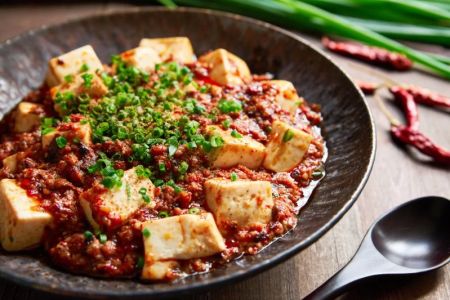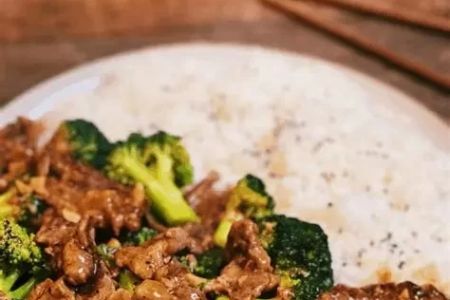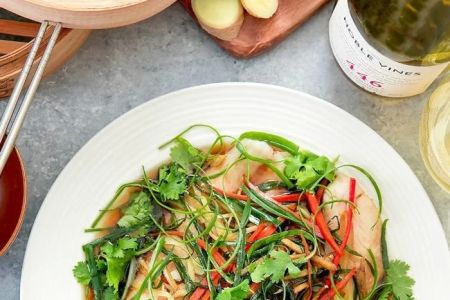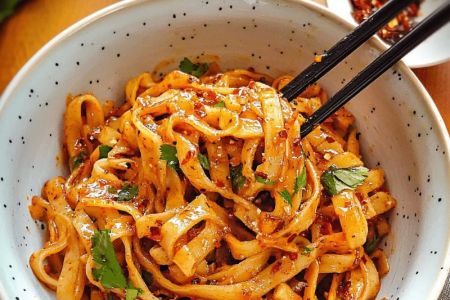- #what-is-lo-mein - noodle-definition - chinese-culinary-tradition
- #lo-mein-origins - cultural-history - authentic-roots
- #classic-variations - chicken-lo-mein - beef-lo-mein - vegetable-lo-mein
- #regional-flavors - american-chinese-style - authentic-chinese-style
- #personal-stories - dining-experiences - foodie-culture
- #cooking-tips - home-recipes - restaurant-quality-dishes
- #how-chinese-food-helps - curated-guides - trusted-recommendations
What is Lo Mein? A Guide to This Popular Chinese Noodle Dish and Its Many Variations
Lo Mein is one of the most beloved Chinese noodle dishes around the world, especially in the United States. At its core, Lo Mein means “tossed noodles,” referring to the way cooked egg noodles are mixed with a savory sauce, vegetables, and often meat or seafood. While it may appear simple, Lo Mein carries layers of tradition, adaptation, and culinary creativity that make it a dish worth exploring.
The Origins of Lo Mein
Cultural history and significance
Lo Mein originated in Northern China, where wheat-based noodles are a staple. The word “Lo” means “tossed” in Cantonese, and “Mein” means “noodles.” Unlike Chow Mein, which involves frying, Lo Mein noodles are boiled until soft, then tossed with sauces and ingredients. Historically, Lo Mein represented comfort food—easy to prepare yet deeply satisfying, often served at family gatherings and festivals.
Authentic roots vs modern adaptations
In China, Lo Mein is often lighter, with subtle soy-based sauces and fresh vegetables. In contrast, the American-Chinese version tends to be richer, with thicker sauces and bold flavors. Both styles have loyal fans, and the diversity reflects how Chinese cuisine adapts across cultures while holding on to its roots.
Classic Variations of Lo Mein
Chicken Lo Mein
Perhaps the most popular variation in U.S. restaurants, chicken Lo Mein combines tender chicken breast slices with noodles, carrots, cabbage, and onions, all tossed in a flavorful soy-based sauce. It is often considered a family-friendly dish because of its mild yet savory profile.
Beef Lo Mein
Beef Lo Mein delivers heartier flavors. Thinly sliced beef is stir-fried with vegetables like bell peppers and mushrooms, then combined with noodles for a robust, savory experience. The marinade often includes garlic, ginger, and sesame oil, making it a favorite for meat lovers.
Vegetable Lo Mein
Vegetable Lo Mein is a versatile option that highlights the freshness of produce. Broccoli, bok choy, snow peas, and bean sprouts add texture and color to the dish, making it appealing to vegetarians or anyone seeking a lighter option. Its balance of flavor and nutrition has made it a popular choice in both restaurants and home kitchens.
Regional and Cultural Flavors
The American-Chinese Lo Mein
In the United States, Lo Mein has become a takeout classic. Sauces are often thicker, and portions are larger, reflecting American dining preferences. It’s common to find Lo Mein served alongside egg rolls and fried rice, creating the quintessential Chinese takeout experience many families know and love.
Authentic Chinese variations
In authentic Chinese cooking, Lo Mein is lighter and more delicate. Ingredients like Chinese greens, fresh garlic, and lighter soy sauces are used to create a healthier, subtler dish. Some regional versions even incorporate seafood, reflecting coastal influences.
Personal Experiences with Lo Mein
For many, Lo Mein isn’t just food—it’s tied to personal memories. One New Yorker recalls growing up near a family-owned Chinese restaurant where Lo Mein was their Friday night ritual. The restaurant eventually closed, but the memory of slurping noodles with family remains vivid. Stories like these show how dishes like Lo Mein weave into cultural and personal identities across generations.
Cooking Tips for Perfect Lo Mein
Making Lo Mein at home
Home cooks can replicate restaurant-quality Lo Mein with a few key steps. Use fresh egg noodles if available, and always toss them quickly with the sauce to avoid sogginess. Preparing vegetables in advance ensures the noodles don’t overcook while waiting for stir-fry ingredients.
Tips from chefs
Many chefs recommend using high heat to keep vegetables crisp and flavors bold. A wok or heavy skillet works best. Balancing soy sauce, oyster sauce, and sesame oil is crucial for achieving that signature flavor. Experimenting with protein and vegetables allows you to customize the dish to your liking.
How Chinese Food Helps You Discover Lo Mein
Curated guides for noodle lovers
Chinese Food provides guides on where to find the best Lo Mein, whether you’re seeking authentic Chinese styles or American-Chinese favorites. Our resources connect food lovers with restaurants and products that highlight the true diversity of this beloved noodle dish.
Why choose us
With Chinese Food, you can explore trusted recommendations for dining out or cooking Lo Mein at home. Whether you crave classic chicken Lo Mein or want to experiment with authentic regional variations, we help you discover dishes that bring both tradition and creativity to the table.







